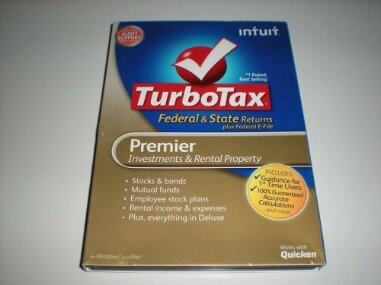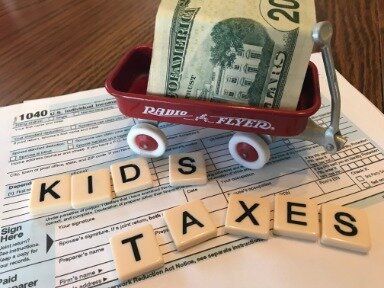Contents:


Finally, the closing balance of the schedule links to the balance sheet. This helps complete the process of linking the 3 financial statements in Excel. The amount of retained earnings that a corporation may pay as cash dividends may be less than total retained earnings for several contractual or voluntary reasons. These contractual or voluntary restrictions or limitations on retained earnings are retained earnings appropriations. For example, a loan contract may state that part of a corporation’s $100,000 of retained earnings is not available for cash dividends until the loan is paid. Or a board of directors may decide to use assets resulting from net income for plant expansion rather than for cash dividends.
The normal balance in a profitable corporation’s Retained Earnings account is a credit balance. This is logical since the revenue accounts have credit balances and expense accounts have debit balances. If the balance in the Retained Earnings account has a debit balance, this negative amount of retained earnings may be described as deficit or accumulated deficit. Retained earnings are the accumulated net income of the corporation minus dividends distributed to stockholders. The U.S. Generally Accepted Accounting Principles require a statement of retained earnings to be prepared whenever comparative balance sheets and income statements are presented. The statement of retained earnings uses information from the income statement and provides information to the balance sheet.
Which Transactions Affect Retained Earnings? – Investopedia
Which Transactions Affect Retained Earnings?.
Posted: Sat, 25 Mar 2017 11:46:24 GMT [source]
Additional paid-in capital reflects the amount of equity capital that is generated by the sale of shares of stock on the primary market that exceeds its par value. When a company has positive profits, it will give some of it out to shareholders in the form of dividends, but it will also reinvest some of it back into the company for growth reasons. These adjustments could correct errors or rectify incorrect estimates that were used in the preceding accounting period. Cost of goods sold , selling, general, and administrative (SG&A) expenses, taxes, and a few other accounting deductions. The result is the earnings of the company over the specified period of time.
It is a measure of all profits that a business has earned since its inception. Therefore, it can be viewed as the “left over” income held back from shareholders. Understanding the nuances of retained earnings helps analysts to determine if management is appropriately using its accrued profits. Additionally, it helps investors to understand if the business is capable of making regular dividend payments.
Shareholder Equity Impact
The income statement account with the same type of balance as the Retained Earnings account is the Revenue account. Retained earnings are the accumulated profits of the previous years. Restricted retained earnings are before retained earnings, which the Company must keep or retain due to a contractual agreement, law, or covenant. A third party requires the Company to retain some amount, and the shareholders can be distributed dividends after such an amount is retained.
- Since this account is more closely related to revenue than to expenses, it is a credit.
- This is the amount of income left in the company after dividends are paid and are often reinvested into the company or paid out to stockholders.
- The amount of retained earnings a company has generally indicates that the company is profitable and is therefore an indication of the positive performance of the company.
- Thus, the retained earnings balance does not perfectly portray the level of success or profitability of a company.
- In order to maintain their retained earnings, some companies do not pay dividends to their shareholders.
- Retained earnings are the profits that remain in your business after all costs have been paid and all distributions have been paid out to shareholders.
Accountants use the formula to create financial statements, and each transaction must keep the formula in balance. This bookkeeping concept helps accountants post accurate journal entries, so keep it in mind as you learn how to calculate retained earnings. Retained earnings are part of a company’s equity account and a debit to this account decreases the balance while a credit increases it. In order for the company’s financial books to balance, when a debit is made to the retained earnings account, a corresponding credit has to be made to another account. If a credit is made to the retained earnings account, a corresponding debit has to be made to another account.
Video Explanation of Retained Earnings
statement of activitiesrails’ FP&A software replaces spreadsheets with real-time data and integrates fragmented workbooks and data sources into one centralized location. This allows FP&A analysts to work in the comfort of Microsoft Excel with the support of a much more sophisticated data management system at their disposal. There are a variety of ways in which management, and analysts, view retained earnings. Management will regularly review retained earnings and make a decision based on the goals and objectives they have established.
If not managed carefully, retained earnings can lead to cash flow problems or difficulty obtaining financing. The formula for calculating retained earnings is straightforward and is typically disclosed in footnotes to the financial statements. There are only three items that impact retained earnings, net income, cash dividends, and stock dividends. Instead, they reallocate a portion of the RE to common stock and additional paid-in capital accounts. This allocation does not impact the overall size of the company’s balance sheet, but it does decrease the value of stocks per share. Balance sheet under the shareholder’s equity section at the end of each accounting period.

Therefore, you decide to issue a 10% stock dividend — 100 shares — instead of a cash dividend. Many companies will say they’re giving away X% of their company as stock dividends — you have to calculate how many shares X% represents. Retained earnings are also helpful in calculating your business’s book value, the net value of all your business’s assets. If you were to liquidate your company today, your total payout to all shareholders would be approximately equal to your book value.
Assets, Liabilities, Equity: Comparison
DividendsDividends refer to the portion of business earnings paid to the shareholders as gratitude for investing in the company’s equity. The Financial StatementsFinancial statements are written reports prepared by a company’s management to present the company’s financial affairs over a given period . It should be noted that the Company is not bound by a legal contract to appropriate retained earnings.
- The amount of this capital is equal to the amount the investor pays for the stock in addition to the face value of the share itself.
- Beginning retained earnings are then included on the balance sheet for the following year.
- To calculate RE, the beginning RE balance is added to the net income or reduced by a net loss and then dividend payouts are subtracted.
- Retained earnings are the company’s net income that it keeps for future business operations instead of paying out as dividends to its shareholders.
What are the pros and cons of straight line depreciation versus accelerated depreciation methods? Here’s how you can decide if straight line depreciation is right for your business. The right financial statement to use will always depend on the decision you’re facing and the type of information you need in order to make that decision.
Hence if a company declares $8,950 in dividends to its shareholders on October 28, 2022, the journal entry to record this dividend payment will be as the one below. Journal entries for retained earnings are made when the company transfers its net income to the income summary account and when dividends are paid out. The income summary is a temporary account that is used to close the income and expenses of a company for each accounting period. If the net income is a profit, it is a credit to the retained earnings. Here, we shall discuss retained earnings, debit, and credit so that we can understand how the retained earnings are recorded and if they are debit or credit. On your company’s balance sheet, they’re part of equity—a measure of what the business is worth.
Step 1: Explanation on Retained Earnings Balance
The company posts a $10,000 debit to cash and a $10,000 credit to bonds payable . It represents profit generated from day-to-day business operations. Well-managed businesses can consistently generate operating income, and the balance is reported below gross profit.

Shareholder’s equity section includes common stock, additional paid-in capital, and retained earnings. The company records that liabilities increased by $10,000 and assets increased by $10,000 on the balance sheet. There is no change in the company’s equity, and the formula stays in balance. Business owners should use a multi-step income statement that also separates the cost of goods sold from operating expenses. Dividends are cash or stock payments that a company makes to its shareholders out of profits or reserves, typically on a quarterly or annual basis.
Do Retained Earnings Carry Over to the Next Year?
Corrections of abnormal, nonrecurring errors that may have been caused by the improper use of an accounting principle or by mathematical mistakes are prior period adjustments. Normal, recurring corrections and adjustments, which follow inevitably from the use of estimates in accounting practice, are not treated as prior period adjustments. Also, mistakes corrected in the same year they occur are not prior period adjustments. When the balance in the retained earnings account is negative, this indicates that a business has generated an aggregate loss over its life. Companies with multiple shareholders will sometimes give out stock dividends instead of cash dividends.
Reserves appear in the liabilities section of the balance sheet, while retained earnings appear in the equity section. It’s also possible to create a retained earnings statement, alongside the regular balance sheet and income statement/profit and loss. If your company pays dividends, you subtract the amount of dividends your company pays out of your net income. Generally, a company’s earnings can be either positive or negative. If a company’s earnings are positive, it means the company has been able to generate profits from the goods and services they offer. If a company’s earnings are negative, the company has incurred losses from its operations.
The elements that help derive the retained income figures are – retained income in the beginning, net profit or loss, i.e., the net income, and applicable share of dividends. The income statement calculates net income, which is the balance you have after subtracting additional expenses from the gross profit. Cash dividends are payments that a business makes to shareholders from profits or cash reserves.
Balance Sheet vs. Income Statement: What’s the Difference? – The Motley Fool
Balance Sheet vs. Income Statement: What’s the Difference?.
Posted: Fri, 05 Aug 2022 07:00:00 GMT [source]
Suppose the beginning retained income of the company is $150,000, and the profit earned is worth $10,000 . Plus, the company board decides to pay $1,500 as a dividend to shareholders. DividendDividends refer to the portion of business earnings paid to the shareholders as gratitude for investing in the company’s equity. Net income, which you’ll need to calculate your retained earnings balance later. Retained earnings are the profits that remain in your business after all expenses have been paid and all distributions have been paid out to shareholders.
As retained earnings represent accumulated income as of a particular date, it makes sense to report retained earnings on the balance sheet. But not all of the shareholder’s equity is made up of profits that haven’t been distributed. There is also money that investors paid for their stake in the first place. But the company may buy-back some of those shares, which reduces the value of paid-in capital. Any such stock buy-backs might show up as a negative number on the balance sheet in an account called treasury stock. Finally, if the balance of retained earnings is growing over time that might not be a good thing.
Retained Earnings are the portion of a business’s profits that are not given out as dividends to shareholders but instead reserved for reinvestment back into the business. These funds are normally used for working capital and fixed asset purchases or allotted for paying of debt obligations. There is no requirement for companies to issue dividends on common shares of stock, although companies may try to attract investors by paying yearly dividends. Stock dividends are payments made in the form of additional shares paid out to investors. Revenue accounts are the accounts related to revenues such as sales revenue, service revenue, rent revenue, interest revenue and so on.
The tools and resources you need to take your business to the next level. The tools and resources you need to run your business successfully. The tools and resources you need to get your new business idea off the ground. Multimedia Hub Listen to the Mind the Business podcast by QuickBooks and iHeart. Self-Employed The tools and resources you need to run your own business with confidence.
However, the amount of the retained earnings balance could be relatively low even for a financially healthy company, since dividends are paid out from this account. Consequently, the amount of the credit balance does not necessarily indicate the relative success of a business. The Statement of Shareholder’s Equity is one of the four main financial statements prepared during a company’s accounting cycle.
Appropriated Retained Earnings Definition – Investopedia
Appropriated Retained Earnings Definition.
Posted: Sun, 26 Mar 2017 07:40:42 GMT [source]
Explain why liability account balances have a credit after the balance. Explain the concept of debits and credits and how it applies to the various account types. Datarails is an enhanced data management tool that can help your team create and monitor cash flow against budgets faster and more accurately than ever before.
Retained earnings can also be used to pay off debt, which can help businesses reduce their overall financial burden. Additionally, businesses can use their retained earnings to fund employee benefits, such as health insurance or retirement plans. This can help businesses attract and retain talented employees, which can be beneficial for the long-term success of the company. Retained earnings can be an important tool for businesses when it comes to planning for the future.
It has a credit balance as the normal balance, which gets increase by every credits. This is because it forms a part of the shareholders’ equity section of the balance sheet. However, if the value of these profits is negative, they are considered a debit balance. When companies declare dividends, the amount is deducted from their retained earnings. Therefore, the more often a company pays dividends to its shareholders, the more its retained earnings balance gets reduced. In order to maintain their retained earnings, some companies do not pay dividends to their shareholders.


